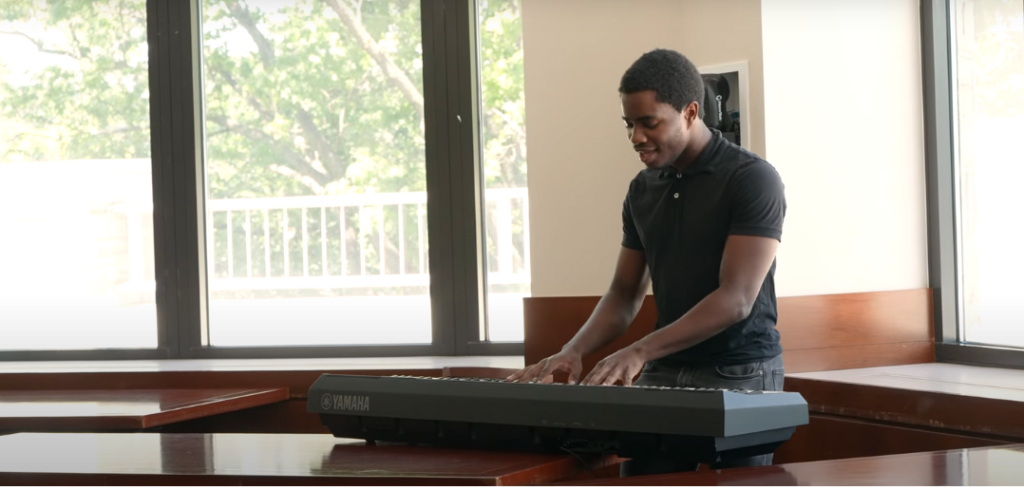“I was listening to a bunch of Stevie Wonder and I thought, ‘This man is blind and put out all this music.’ And then next came an Art Tatum song,” he said, and an idea began to form. “That started brewing for the rest of the day.”
Scriven mentioned the idea to his advisor, Nathan Lincoln-Decusatis, Ph.D., who encouraged him and connected Scriven to a grant from the Undergraduate Research Symposium.
“He latched onto it and told me I should expand on it,” said Scriven, a musician himself who had cataracts most of his life, making the subject deeply personal.
Finding Insights
Scriven’s project, titled Innervisions after the Grammy-award winning album from Stevie Wonder, centered on the work and artistry of Wonder, Ray Charles, Art Tatum, and Marcus Roberts. By analyzing their discographies and biographies, Scriven sought to find a throughline illuminating their success and influence.
“They all contributed so heavily to Black culture through music that I felt like it wasn’t a coincidence,” Scriven said.
He began by familiarizing himself with the full repertoire of each artist, looking for patterns, such as how many of them played on the raised black keys of the piano, which are more easily distinguishable.
“Especially with Art Tatum playing jazz, he would play standards in those [flat] keys—which are hard to play in—but it was easier for him to orient himself that way,” Scriven said.
As a part of his research, he visited the D’Agostino Greenberg Music School for the Blind in Manhattan to immerse himself in how visually impaired musicians learn through methods such as braille music notation and ear training.
“Something I talked about in my research is cortical plasticity, which is the potential of our brain to adapt to environments,” Scriven said. “With blind individuals, they’re extracting so much more information from sound. It leads to more of an inclination for perfect pitch and musicality.”
Through his research, Scriven also concluded that the artists’ visual impairments led them to pioneer innovative techniques, such as combining genres, using unusual chord structures, and popularizing cutting-edge technologies like synthesizers and electronic keyboards.
“They wanted to make music that wasn’t for the present—that’s the secret sauce,” said Scriven.
These musicians’ ability to overcome their physical limitations is just as integral to their impact as their unorthodox techniques or musical virtuosity, Scriven said.
“They took it upon themselves to rise above that—to strive for that creative freedom,” he said.
A Personal Connection
Scriven was also personally invested in this project. As a piano player, he faced similar challenges for most of his life due to his cataracts; just after starting college he had surgery to correct them.
“It was very hard for me to learn music through the traditional methods of sheet music,” he said, adding that he learned mostly by ear. “I remember being very frustrated. But if I didn’t have those challenges, I would never have been able to rise above them.”
Scriven presented his project at the Undergraduate Research Symposium earlier this year. He said this initial work led to more questions about the concrete connections between blindness and musicality and inspired him to want to continue research in this area.


